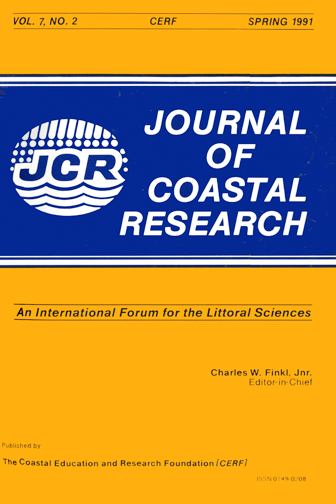Island Land Loss and Marsh Vertical Accretion Rate Evidence for Historical Sea-Level Changes in Chesapeake Bay
Keywords:
Chesapeake Bay islands, 210Pb, 137Cs, pollen geochronology, subsidenceAbstract
Long-term changes in marsh vertical accretion rates based on pollen and radionuclide geochronologies and historical reconstruction of land loss in bay islands were used to investigate changes in sea level in the Chesapeake Bay from colonial times. These records suggest that the rapid submergence of the Bay region documented in local tide-gauge records essentially dates from only the early nineteenth century; whereas, rates of sea-level rise throughout the seventeenth and eighteenth centuries were relatively slow. Land loss and marsh vertical accretion rates have further accelerated since the late nineteenth century. This pattern of sea-level changes in the Chesapeake corresponds with the general changes in global climate of the last several centuries associated with the Little Ice Age. Nevertheless, global eustasy cannot account for a large percentage of the present sea-level trend in the Bay. We hypothesize that enhanced land subsidence rates from anthropogenic groundwater withdrawal and sediment loading are other major factors which may account for the high rate of submergence in especially the mid-Chesapeake region.


